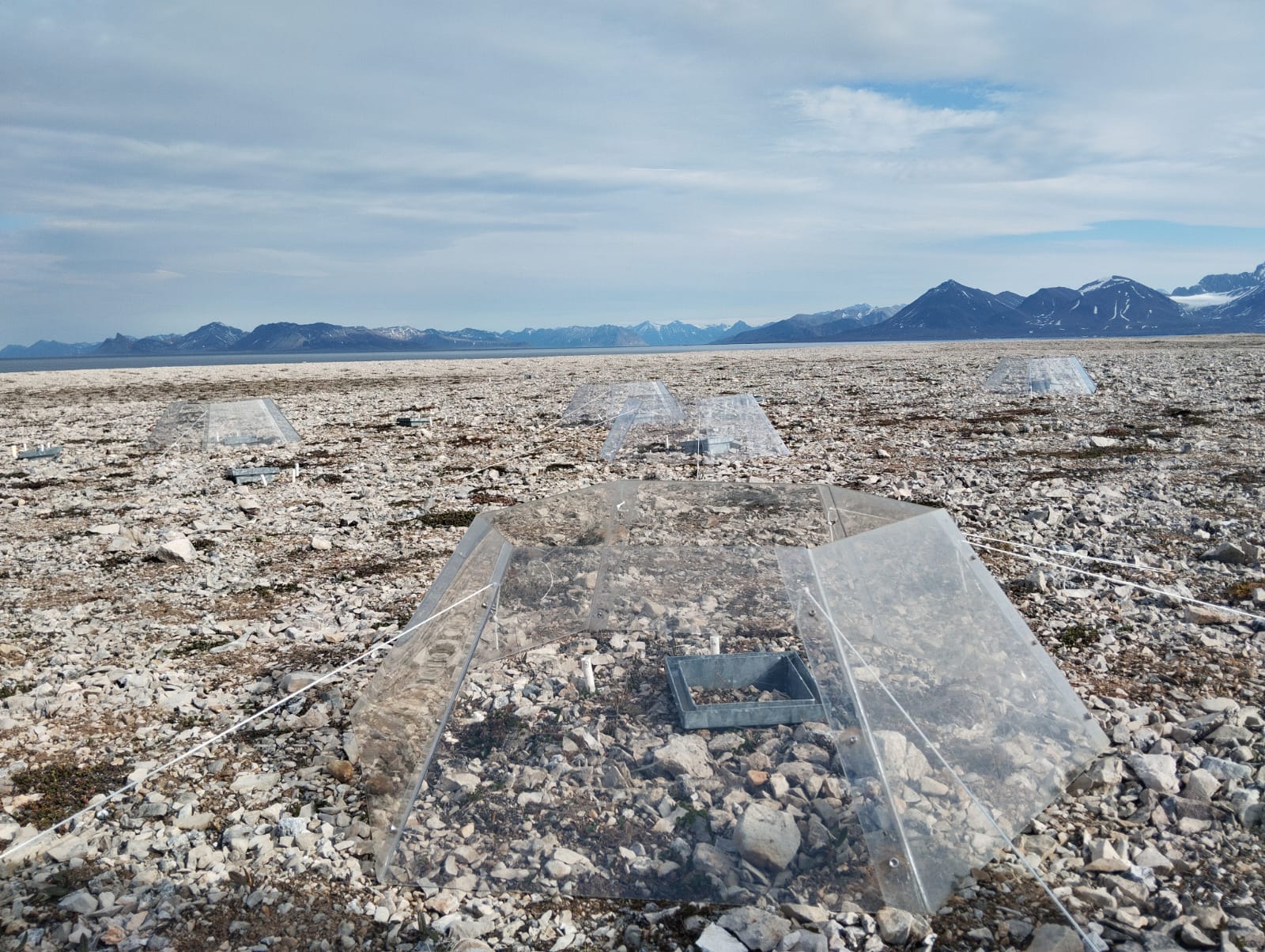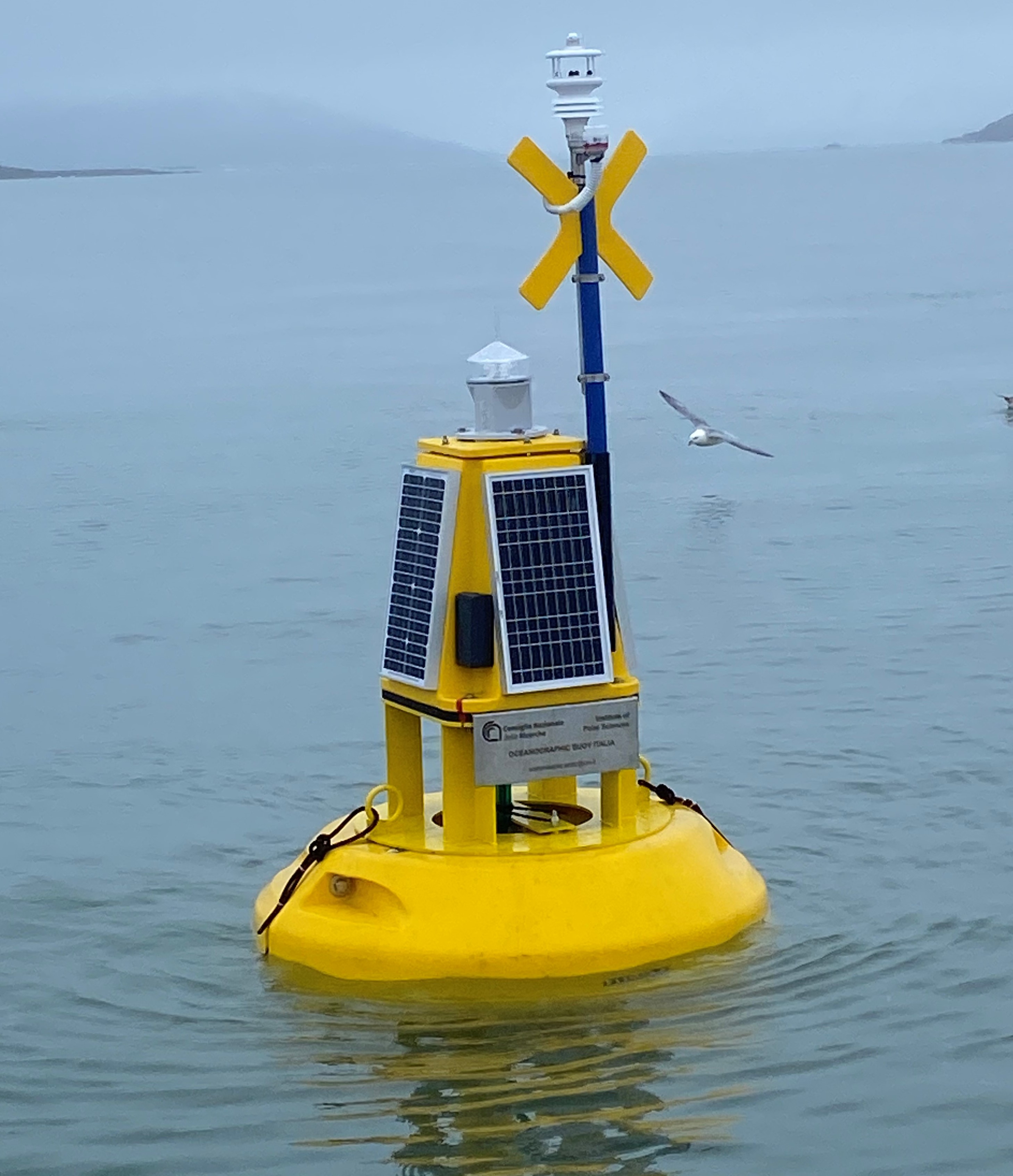dataset
Type of resources
Available actions
IADC Research Activities
Topics
Keywords
Contact for the resource
Provided by
Years
Formats
Representation types
Update frequencies
status
Scale
-
Sampling of PM10 aerosol using a cascade impactor to define the chemical composition in six different size stages. The quartz filters were extracted with ultrapure water and water soluble species were determined: major ions, MSA, carboxylic acids, amino acids, sugars, phenolic compounds, and other organic water-soluble emergening pollutants.
-

A long-term climate manipulation experiment has been ongoing since 2014 at the REMUS site (Responses of Microbes in Upper Soil Horizons to Environmental Manipulations). Twenty-four open-top chambers (OTCs) were installed to simulate warmer ground temperatures and increased precipitation. To mimic enhanced rainfall, irrigation is applied twice a year, at the end of June and August. The transparent OTCs create an average ground temperature increase of approximately 1°C in the treated plots. The site is located about 11 Km from Ny-Ålesund at Kongsfjordneset (78.96661°N 11.47576°E) on the Brøgger Peninsula. In total, 48 plots with different plant species have been selected for the study. Of these, 24 are equipped with OTCs, while the remaining 24 are irrigated, with half of the irrigated plots also containing OTCs (12 with OTCs, 12 without). The REMUS site is registered on the Research in Svalbard Portal under ID 6921. This site is part of the International Tundra Experiment (ITEX), a global research initiative aimed at understanding the responses of tundra plant species through simple manipulation and transplant experiments conducted across multiple Arctic and alpine sites.
-

This dataset comprises measurements from moored surface buoy installed in the Kongsfjorden in proximity of the Mooring Dirigibile Italia (MDI). The buoy is managed by the Institute of Polar Sciences of the National Research Council (CNR). The buoy was moored in September 2023 with the aim to expand the observation on the sea-surface layer and also on the athmosphere in the framework of the Italian PNRR project ITINERIS. The buoy is equipped with sea surface temperature sensor positioned at 1m below the sea-level and meteorological station mounted at 2 m above the sea-leve. Mesured properties are seawater temperature, wind speed and direction, air pressure, air temperature, solar radiation and atmospheric humidity.
-

RIS: 11079 ARctic DISsolved CO2 (AR-DIS-CO2) Project start: 2018-08-16 end: 2023-08-16 The project tackles the dynamics of dissolved gases in the ocean water of the Kongsfjorden (Svalbard islands, W archipelago). The main goals are: the characterization and monitoring of Kongfjorden’s waters in terms of dissolved gases species and ii) the identification and understanding of the relationships between dissolved gases time-variations and glaciers melting dynamics. Focus of the research activities is to monitor and comprehend the processes involving major dissolved gas species, trying to identify and understand how drainage melt glaciers influence the TDIC and gas contents of the fjord. The project is also aimed to develop a portable instrument for on-site measurements of TDIC and dissolved gases (in particular CO2, but also O2, N2, Ar, CH4, H2). Vertical profiles of temperature, pH, salinity along selected site in the Kongsfjorden. The selection of measurement sites was addressed to obtain data at least from one of the most deep vertical profile and also from profiles close to main glaciers drainages (Bayelva basin and Kronebreen-Kongsvegen glaciers). TDIC measurements is performed in water samples. water samples in glass bottles pre-evacuated are collected for gases determination.
-

The column water vapor or Precipitable Water Vapor (PWV) is measured at Thule Air Base (76.5°N, 68.8°W), Greenland, by means of a ground-based millimeter-wave spectrometer (GBMS) installed at 220 m a.s.l. The GBMS observes rotational lines of atmospheric molecules emitting between 230 and 280 GHz, with a spectral pass band of 600 MHz. The PWV is calculated from direct measurements of atmospheric opacity (tau) at the indicated frequencies by using the linear relation PWV = a+tau*b, where a and b depend only on frequency. Measurements have a temporal resolution of 15 minutes and are carried out continuously when the GBMS is operated.
-

Homogenized Tethered Balloon record at station Ny-Ålesund, Spitsbergen in 2018 The scientific goals of BC-3D are to evaluate the distribution of Black Carbon and Mineral Dust in the first layers of atmosphere and surface snow over targeted Svalbard glaciers in order to identify the mechanisms of the air/snow exchanges also assisted by model predictions to provide the full 3D picture. Aerosol vertical profiles by tethered balloon: Aerosol vertical profiles gridded at a 50 m spatial resolution: R, T, P, RH, Aerosol size distribution, BC concentration. Maximum altitudes 1500 m.
-

Measurements are obtained using a Pyrgeometer Kipp&Zonen, model CGR4, installed at Thule Air Base (220 m a.s.l.) in May 2013. The instrument sensitivity was determined during factory calibration for temperatures down to -40 °C, thus specifically suited for the polar environment. Data are acquired by a datalogger at 30 s time intervals and then transferred to a PC. The CGR4 and its dedicated PC are maintained by Daniela Meloni at ENEA.
-
Continuous physical-chemical monitoring (1 measurement each 15 min) performed by a CTD probe and a turbidity sensor installed at the Bayelva river near the new bridge. Measurements are carried out during summer period, from the beginning of the melting season to beginning of autumn when the water start freezing.
-
Snow sampling every year at the Kongsvegen glacier, in Svalbard
-

This dataset comprises measurements from a moored single-point acoustic current meter, collected by the Mooring Dirigibile Italia (MDI), which is managed by the Institute of Polar Sciences of the National Research Council (CNR). The data was gathered at Kongsfjorden, Svalbard Island, since 10 September 2010. This dataset is also part of the SIOS-Svalbard Integrated Arctic Earth Observing System, developed to observe the impacts of climate change, including the rapid loss of sea ice cover, the retreat of local glaciers, and the Atlantification of Arctic seas. Measured properties are: subsurface temperature and subsurface currents. The acquisition of this time series data is still ongoing and will continue, bolstered by the inclusion of this infrastructure within the framework of the Italian PNRR project ITINERIS. This ensures sustained data collection and further enhances our understanding of the observed environmental changes.